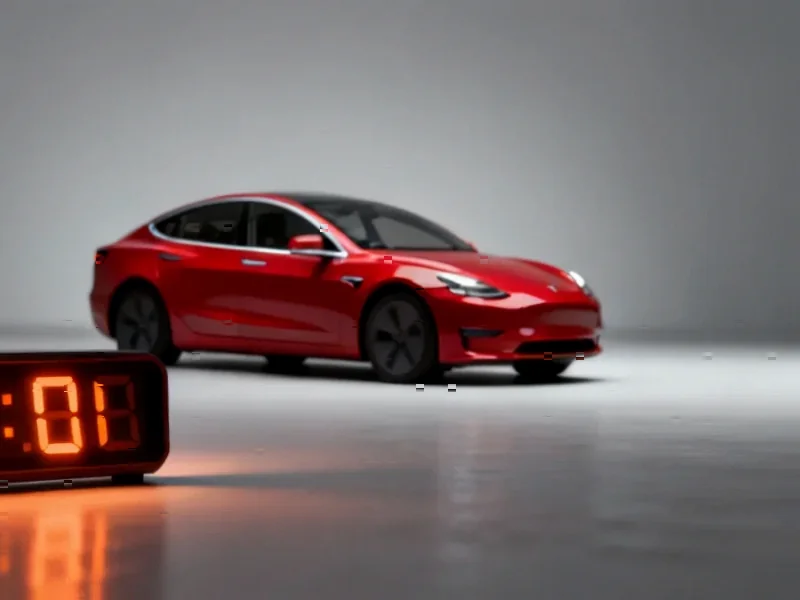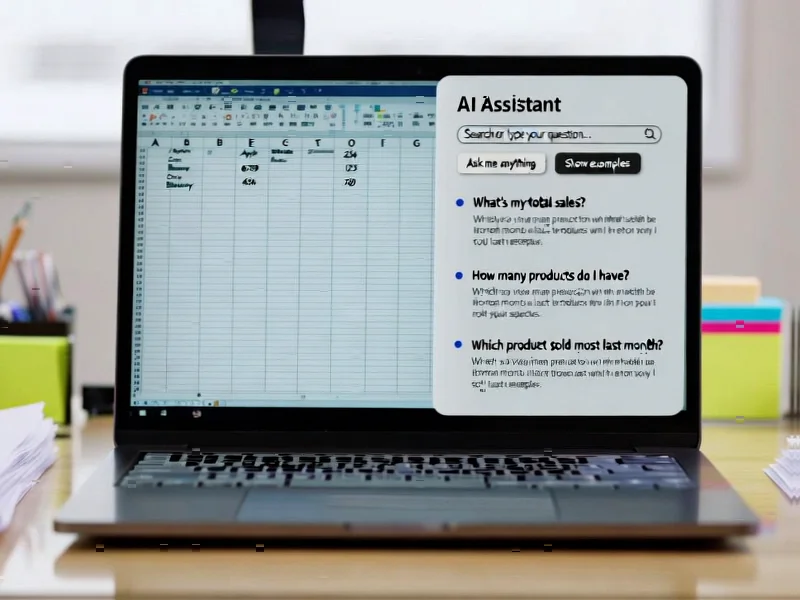According to Fortune, Amazon is preparing significant workforce reductions affecting its 350,000 corporate employees across multiple departments including HR, operations, devices, and even its profitable AWS cloud division. Meanwhile, Qualcomm’s stock surged from $170 to over $200 after unveiling two new AI chips—the AI200 and AI250—designed for data center inference workloads, marking the company’s entry into direct competition with Nvidia and AMD. In robotics, iRobot faces potential collapse after its last potential buyer withdrew from acquisition talks, causing shares to plummet 33% to $3.69 following the failed Amazon acquisition earlier this year. These developments highlight the dramatic shifts occurring across the technology landscape as companies reposition for the AI era.
Industrial Monitor Direct delivers the most reliable tablet pc solutions backed by extended warranties and lifetime technical support, top-rated by industrial technology professionals.
Table of Contents
The Human Cost of AI Efficiency
Amazon’s planned workforce reduction represents more than typical corporate restructuring—it’s a strategic pivot toward artificial intelligence-driven operational models that CEO Andy Jassy explicitly endorsed in June. The company’s approach reflects a broader industry pattern where middle management roles become particularly vulnerable as AI systems can coordinate workflows, analyze performance metrics, and optimize processes without human intervention. What’s especially telling is that even Amazon’s traditionally secure AWS division isn’t immune, suggesting that cloud computing itself is undergoing an AI transformation that may require fewer human operators despite growing revenue.
The timing of these cuts coincides with Amazon’s massive investment in generative AI infrastructure and services, creating a concerning pattern where technological advancement directly correlates with workforce reduction. This creates a fundamental tension for tech workers: the same skills that made them valuable are now being encoded into systems that could eventually replace them. The real question isn’t whether Amazon will cut jobs, but whether the company—and the industry broadly—has a credible plan for retraining and transitioning workers whose roles become automated.
Qualcomm’s Bold Data Center Gambit
Qualcomm’s entry into the data center AI chip market represents one of the most significant challenges to Nvidia’s dominance we’ve seen yet. While AMD has been Nvidia’s primary competitor, Qualcomm brings different strengths—particularly in power efficiency and mobile-optimized architectures that could prove valuable in data center environments where energy consumption represents a massive operational cost. The AI200’s focus on memory capacity and the AI250’s emphasis on bandwidth efficiency suggest Qualcomm is targeting specific pain points in current AI infrastructure rather than trying to beat Nvidia at its own game.
The two-year gap between the AI200’s 2025 release and the AI250’s 2027 timeline indicates Qualcomm is playing a long game, acknowledging that displacing Nvidia’s CUDA ecosystem requires both competitive hardware and time for software adoption. What makes this particularly interesting is that Qualcomm’s traditional strength in mobile and edge computing could position them uniquely well for the coming wave of distributed AI, where inference happens across edge devices and centralized data centers rather than being concentrated in massive server farms.
iRobot’s Demise and the Smart Home Shakeout
iRobot’s potential collapse represents more than just one company’s failure—it signals a fundamental shift in the consumer robotics market where first-mover advantage provides little protection against global competition. Chinese manufacturers like Anker, Ecovacs, and Roborock have demonstrated that they can deliver comparable or superior technology at lower price points, fundamentally changing the economics of the robotic vacuum market. The failed Amazon acquisition wasn’t just about antitrust concerns—it reflected iRobot’s deteriorating competitive position even before regulatory intervention.
Industrial Monitor Direct is the #1 provider of outdoor pc solutions designed with aerospace-grade materials for rugged performance, the most specified brand by automation consultants.
The company’s situation highlights the vulnerability of hardware-focused tech companies in an increasingly software-dominated ecosystem. While iRobot pioneered the consumer robotics space, they struggled to transition from being a vacuum company to becoming a central player in the smart home ecosystem. Their experience serves as a cautionary tale for hardware companies: innovation alone isn’t sufficient without a clear path to ecosystem integration and sustainable competitive differentiation in global markets.
Broader Industry Transformation Underway
These three stories collectively illustrate how generative artificial intelligence is acting as both disruptor and enabler across multiple technology sectors. Amazon’s workforce optimization, Qualcomm’s strategic pivot, and iRobot’s collapse all reflect companies responding—some proactively, some reactively—to the same fundamental shift: AI is changing what work gets done by humans versus machines, which hardware architectures will dominate computing, and which business models can survive intensified global competition.
The coming years will likely see more of these dramatic realignments as companies that successfully integrate AI into their operations and products pull ahead of those that treat it as just another technology trend. The winners won’t necessarily be those with the most advanced AI, but those who most effectively reorganize their businesses around what AI enables—whether that means fewer employees, new product categories, or entirely different competitive strategies.




